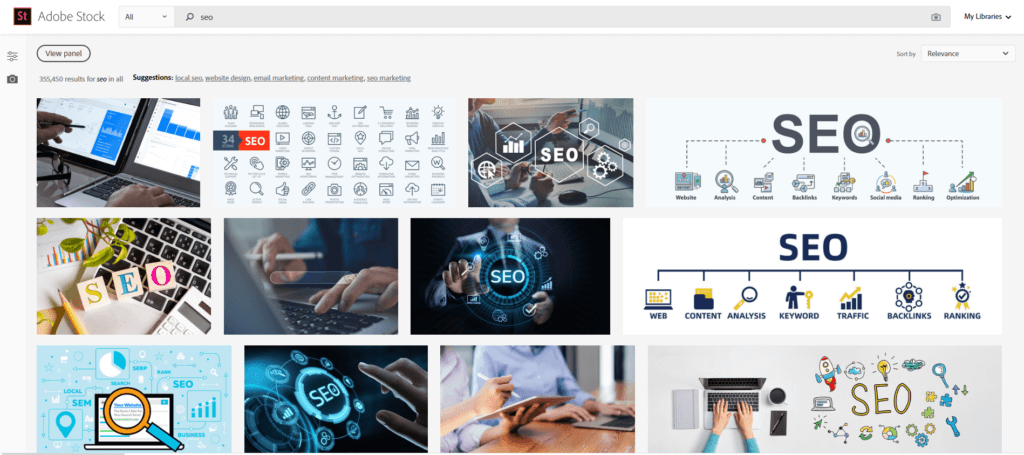
On-Page SEO: A Nifty Checklist for Recruiters
These days, more and more people are using the Internet to find employment opportunities. On the same note, businesses and organisations are also turning to the Internet to find individuals who have the skills, talents, and qualifications they need. This is why if you’re in the recruitment business, it certainly helps to know how to leverage the power of the Internet so you can find more leads that will sustain your company and help it succeed.
However, having an online presence isn’t enough to attract recruitment leads. You must ensure that your website is optimised for search engines. This way, your target audience can easily find you online.
Contents
How to Conduct On-Page Optimisation on Your Website
There are many ways to optimise your website for search engines, but today, we’re going to focus on only one: on-page optimisation. On-page Search engine optimisation involves optimising individual webpages to help your website get better search rankings and generate more traffic.
To ensure that your on-page SEO game is on point, here are important tips you should consider:
1. Optimise your title tags
The title tag is what shows up as the link to your webpage on the search results pages of Google. Aside from that, it plays a very important role in SEO because it helps determine whether users will go and check out your content.
To optimise your title tags, ensure that they are of the right length. Google usually displays the first 50 to 60 characters of a title tag. If your title tag is longer than 60 characters, there’s a huge chance that it won’t be displayed on Google search engine result pages (SERPs) properly. Also, make it click-worthy. Write it in a way that would pique the interest or curiosity of your target audience. Finally, ensure that it contains relevant keywords.
2. Write a good meta description
A meta description is what usually shows up under the title tag on SERPs. It tells both the users and Google what your web page or content is all about. In some cases, Google will pull text from your page and show that as your meta description, especially if you don’t provide a specific description for your web pages.
Similar to optimising title tags, you must ensure that your meta description has the right length. Ideally, it should be between 150 and 160 characters. Also, make sure that it is relevant to what’s on your webpage. So if your content is about nailing job interviews, the meta description should reflect that.
3. Choose your images wisely
Does your website or blog contain cheesy or generic stock images of people in business suits shaking hands followed by a wall of text? If it does, you’re not alone. Most recruiters seem to have a habit of doing that. You might think that it’s okay since everyone is doing the same thing, but the truth is you’re doing your website a great disservice.
When it comes to on-page SEO, your images are supposed to complement and make the content of your website look more interesting. This is why you have to carefully choose the images you’ll use with your blog posts or web pages.
If you want to make your website look more professional, create custom images for each webpage or blog post. Also, when explaining complicated concepts or topics, consider adding diagrams or infographics since using images is sometimes better than posting a wall of text.
To make your images more search engine-friendly, include keywords in their file names. For example, if your post has something to do with finding jobs in the health care sector, the image name should look something like this: landing_health_care_jobs.jpg. Similarly, your alt text should contain the appropriate keywords.
4. Familiarise yourself with HTML basics
Whilst you don’t have to master HTML to make your site more search engine-friendly, you should at least familiarise yourself with the basics of this coding language. This can help you better optimise your webpages, particularly your heading tags.
A heading tag is what you “wrap” your headings with to make the latter more prominent or noticeable. In on-page SEO, the most important heading tags include:
- <h1> </h1> – used for the title of your post/webpage.
- <h2></h2> – used for the subtitles.
5. Use LSI keywords
Latent Semantic Indexing or LSI keywords are keywords that are semantically related to the keywords you’re targeting. They are not merely the synonyms of your keywords. Rather, they are words that are related to your main keywords and designed to help Google better understand what your webpage is all about. For instance, if you’re writing about computer programming jobs, you’d want your content to have related keywords such as C++, C programming, and python.
If you’re having trouble coming up with words that are semantically relevant to the keywords you’re targeting, LSI Graph can help. Simply enter your keyword into the search box and the website will return relevant terms that you can incorporate into your posts and webpages.
Conclusion
On-page optimisation is one of the many steps to making your website more search engine friendly. Because candidates and employers won’t sign up for your services without a little nudge from you, you should take a proactive approach to making your website more visible and searchable online. As such, be sure to follow the pointers discussed above so you can attract more traffic and generate more recruitment leads.
If you need help leveraging the power of Google to generate more leads, we are happy to lend you our expertise. Contact us at Recruitment Traffic to find digital marketing solutions that will take your recruitment firm to the next level.
Drive Your Recruitment Business Towards The Best Results.
Talk to us about how we can help.






